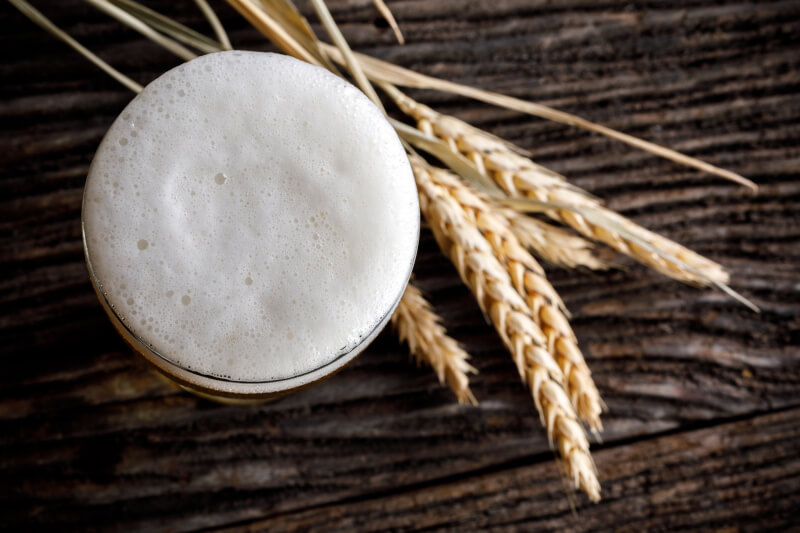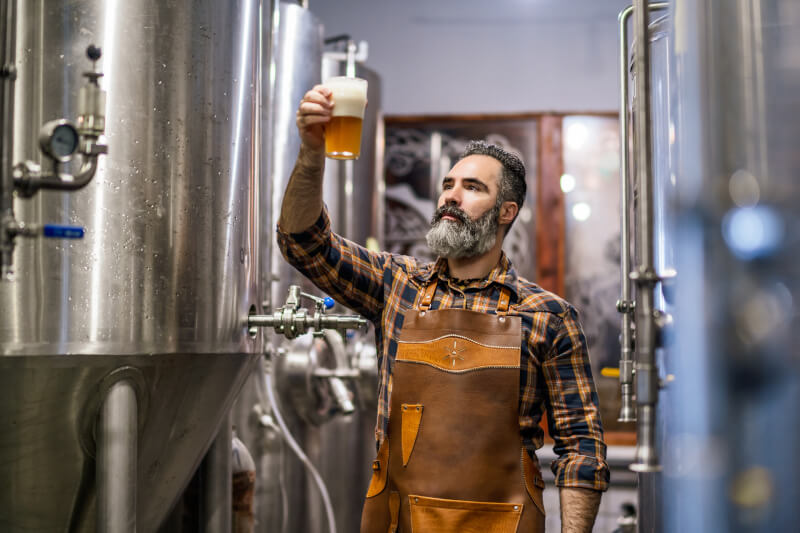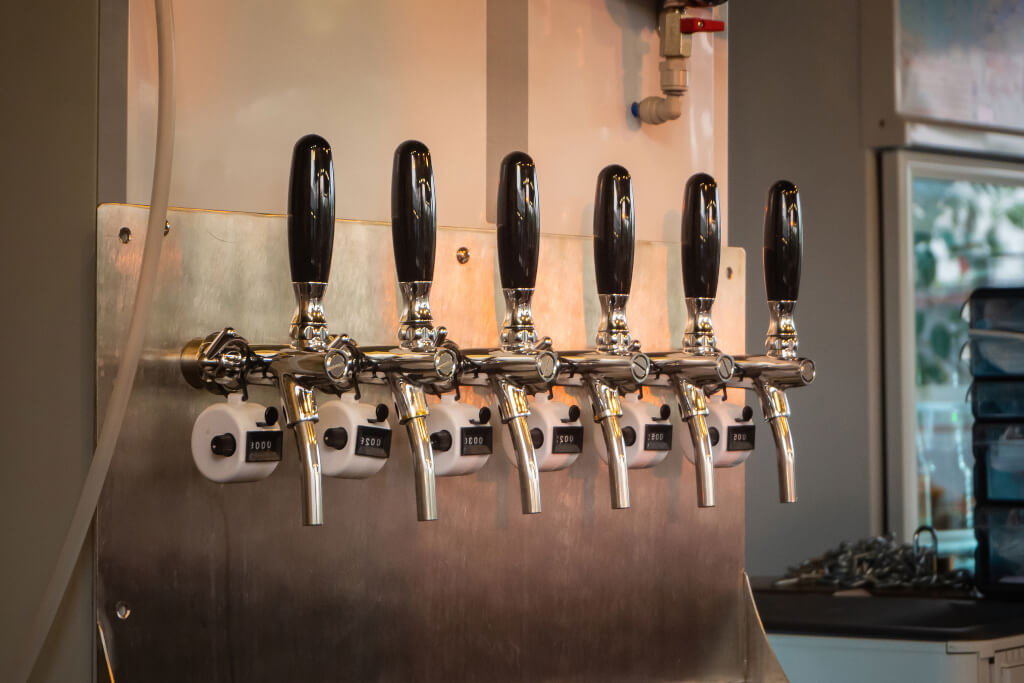In recent years, a fascinating trend has emerged in the world of whisky, propelled by a rather unlikely ally – beer. The traditional lines that once divided these two distinct types of alcoholic beverages are blurring, and a new generation of whisky makers is leveraging the creativity and experimental ethos of the craft beer industry to breathe fresh life into whisky distillation.
Fermenting Innovation
Before barley can become whisky, it must first be beer, or more precisely, a barley “wash,” which is essentially a kind of beer. Traditionally, whisky distillers have given little thought to this intermediary stage, focusing instead on the final product. However, that’s beginning to change.
With the craft beer industry exploding in popularity over the past decade, whisky distillers are drawing inspiration from their beer-brewing counterparts. Brewers have long played with different yeast strains, fermentation times, and ingredients, creating a myriad of flavors and styles in the process. This adventurous spirit is now finding its way into whisky distilleries, leading to exciting new flavors and profiles.
Drawing inspiration from the beer industry, distilleries such as the Waterford Distillery in Ireland are focusing intensely on the fermentation process. Waterford’s goal is to fully capture the terroir of the grains used in their spirits. To this end, they allow their wash to ferment longer, a technique taken from traditional beer brewing. The extended fermentation period results in a more complex flavor profile for the distilled spirit, with more fruity esters and floral notes. Moreover, they are not alone. Many other distilleries, like Westland Distillery in Seattle and England’s Bimber, are similarly pushing the boundaries of the fermentation process, producing richly flavored, beer-inspired whiskies.
Transferring the Brewer’s Yeast
One area where the influence of beer is particularly evident is in the choice of yeast. Traditionally, whisky distillers have used a small selection of standardized distiller’s yeast strains chosen primarily for their efficiency and yield. However, inspired by the beer industry, many distilleries are returning to the use of brewer’s yeast.
Keith Cruickshank, distillery manager at Benromach, says, “We use winter ale-dried yeast from AB Vickers in Burton upon Trent. We mix a small amount of it with the popular Kerry M and MX distillers’ varieties, and it gives us more fruitiness and more apple and pear notes in the wash. It’s subtle, but we think it’s important.”
The use of brewer’s yeast introduces a broader range of flavors during the fermentation process, much like different yeasts can dramatically alter the taste of a beer.
A striking example of a distillery using brewer’s yeast is the Glen Moray Distillery in Scotland. They have released a special edition Scotch whisky distilled with IPA yeast. The whisky was fermented using a yeast strain typically used in Indian Pale Ale-style beers. The resulting whisky had unique flavors not commonly found in whisky, with noticeable hoppy notes, a fresh citrusy sweetness, and a smooth malty finish.
Experimenting with Barley Varieties

Just as craft beer brewers have embraced a diverse range of malts, distillers are now looking beyond the traditional malted barley for their whiskies. This is leading to innovative new whiskies with rich, complex profiles inspired by different styles of beers.
For example, barley that has been roasted longer, similar to the grains used in stout beers, can give the whisky darker, more robust flavors. Similarly, barley roasted to a lesser degree, like those used in pale ales, can result in lighter, more delicate whiskies.
Fermenting Innovation
Drawing inspiration from the beer industry, distilleries such as the Waterford Distillery in Ireland are focusing intensely on the fermentation process. Waterford’s goal is to fully capture the terroir of the grains used in their spirits. To this end, they allow their wash to ferment longer, a technique taken from traditional beer brewing. The extended fermentation period results in a more complex flavor profile for the distilled spirit, with more fruity esters and floral notes. Moreover, they are not alone. Many other distilleries, like Westland Distillery in Seattle and England’s Bimber, are similarly pushing the boundaries of the fermentation process, producing richly flavored, beer-inspired whiskies.
Transferring the Brewer’s Yeast
A striking example of a distillery using brewer’s yeast is the Glen Moray Distillery in Scotland. They have released a special edition Scotch whisky distilled with IPA yeast. The whisky was fermented using a yeast strain typically used in Indian Pale Ale-style beers. The resulting whisky had unique flavors not commonly found in whisky, with noticeable hoppy notes, a fresh citrusy sweetness, and a smooth malty finish.
Experimenting with Barley Varieties
A whisky distillery known for experimenting with barley is the Bruichladdich Distillery, located on the island of Islay in Scotland. They have released the “Bruichladdich Bere Barley”, which uses an ancient variety of barley, Bere, grown locally on the island. Bere is a six-row grain, different from the standard two-row used in most distilleries, and is thought to have been brought to the island by Norse settlers over a thousand years ago. The use of this ancient grain variety gives their whisky a unique, distinct character, with rich, malty flavors and a long, lingering finish.
Beer Cask Finishing

Another technique drawn directly from the craft beer industry is the use of beer casks for whisky aging or finishing. Whiskies aged in beer casks can take on unique flavors and aromas, leading to some truly unique expressions.
Stephen Marshall, Global Marketing Manager at Bunnahabhain, comments, “We’ve experimented with finishing our whisky in stout and IPA casks. The results were quite surprising. The stout casks imparted a rich, chocolatey character to the whisky, while the IPA casks gave it a burst of tropical fruit flavors.”
Jameson, an Irish whisky brand, has been experimenting with beer cask finishing. They have introduced the Caskmates series, which features whiskies aged in stout and IPA casks from local craft breweries. The Jameson Caskmates Stout Edition, for instance, is finished in casks that previously held Irish stout. The influence of the beer on the whisky is evident, giving it additional notes of cocoa, coffee, and butterscotch. On the other hand, the Jameson Caskmates IPA Edition, aged in IPA beer barrels, displays hints of hoppy, citrusy notes, adding an extra layer of complexity to the whisky.
The Craft Influence
The rise of the craft beer movement has shown that there is a market for unique, flavorful, and carefully crafted beverages. Whisky distillers have taken notice and are harnessing the innovative spirit that has fueled the craft beer industry.
Tobias Lindberg, owner of the yet-to-open Gruvguld Distillery in Sweden, summarizes this trend, “Beer has shown us that people appreciate diversity. In whisky, we have a tradition of doing things in a certain way, but that doesn’t mean we can’t explore new directions. The crossover between beer and whisky is providing us with a whole new playground for flavors.”
The High West Distillery in Park City, Utah, is a stellar example of the craft influence on whisky production. They are known for their unique and innovative spirits, often involving unconventional mash bills and aging techniques. High West’s Campfire Whisky, a blend of bourbon, rye, and peated Scotch whisky, is an indication of its experimental nature. Inspired by the broad flavor profiles available in craft beer, High West is always exploring new and interesting blends to challenge the palates of its customers.
The New Wave
This cross-pollination between beer and whisky is more than just a trend – it’s a new way of thinking that’s challenging the status quo and transforming the whisky industry. Whisky makers are re-evaluating every step of the distillation process, from the barley to the cask, and are finding new ways to create a diverse array of flavors.
Kings County Distillery, located in Brooklyn, New York, embodies the new wave of whisky production inspired by craft beer. One of their most popular products is a Peated Bourbon, a fusion of Scotch and bourbon styles. This novel whisky style showcases the adventurous spirit and boundary-pushing ethos of the craft beer industry. Kings County’s unique products, combined with their dedication to small-batch, quality-focused production, demonstrate how beer’s influence is ushering in a new era in the world of whisky. And as they continue to draw inspiration from the craft beer industry, we can expect to see a whole new wave of whiskies, each with its unique twist. The future of whisky is here, and it’s got a dash of hops to it.

